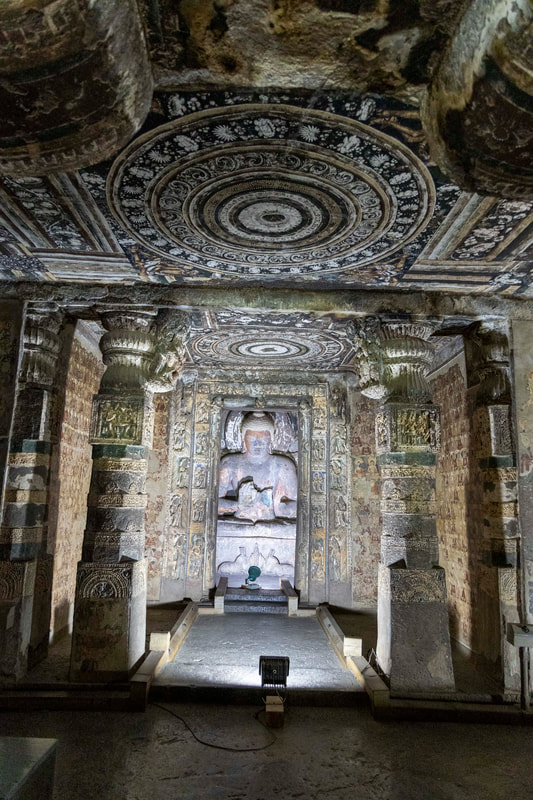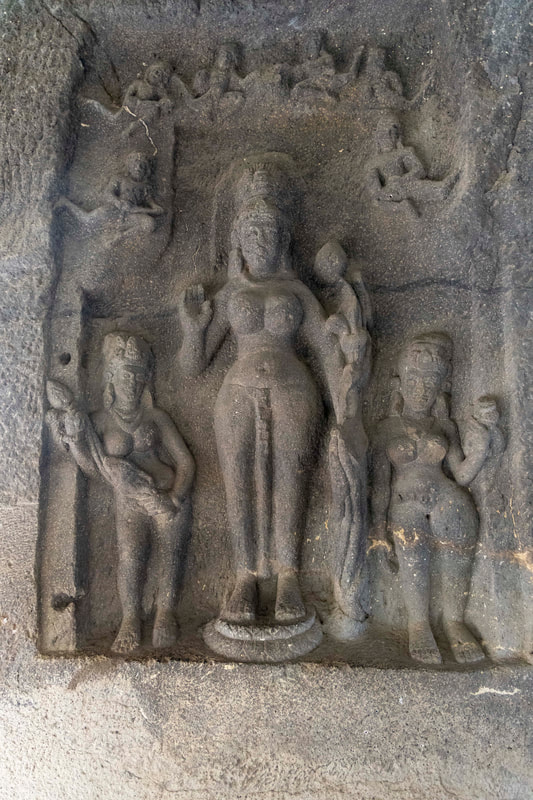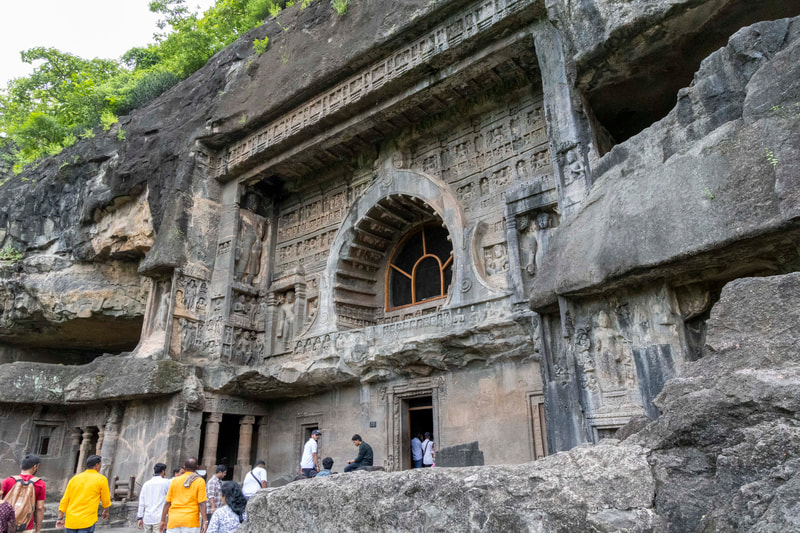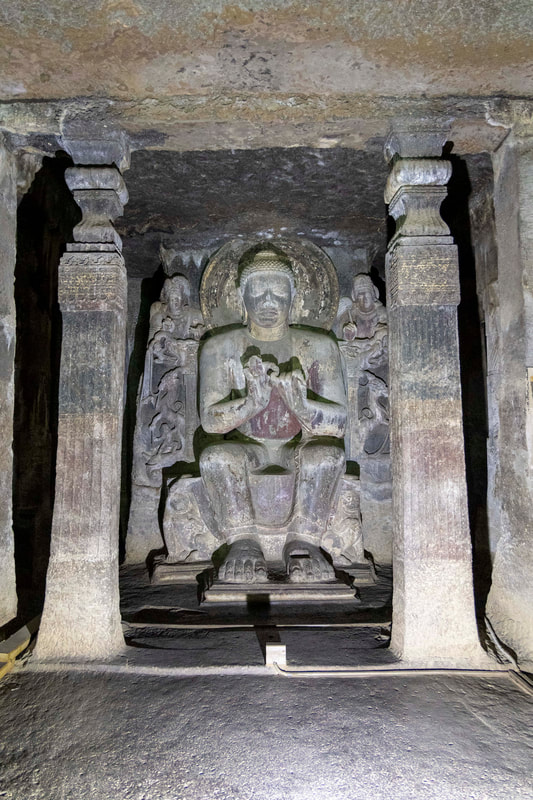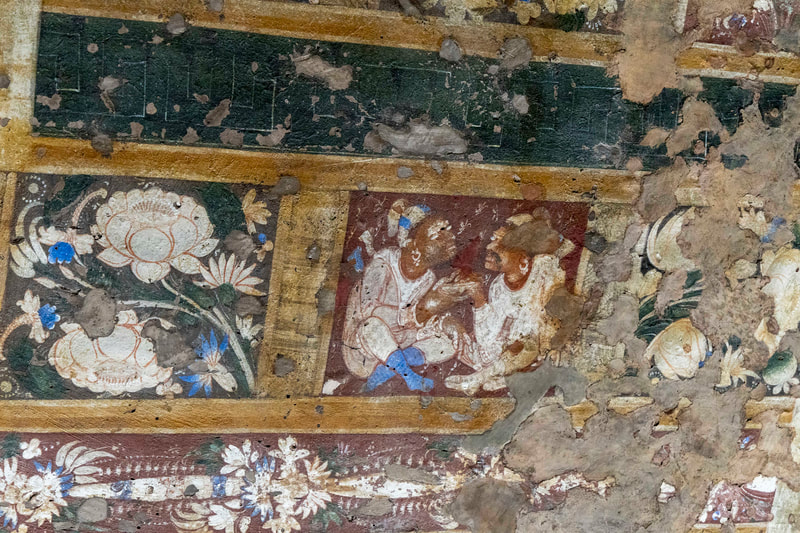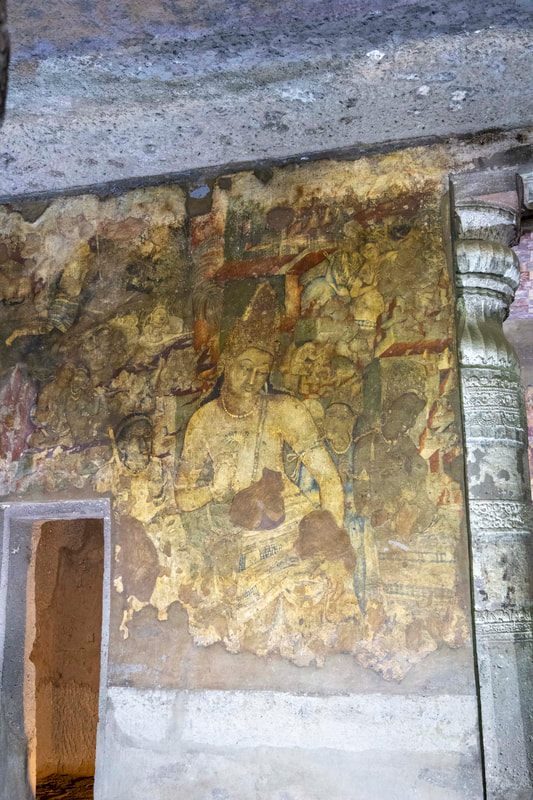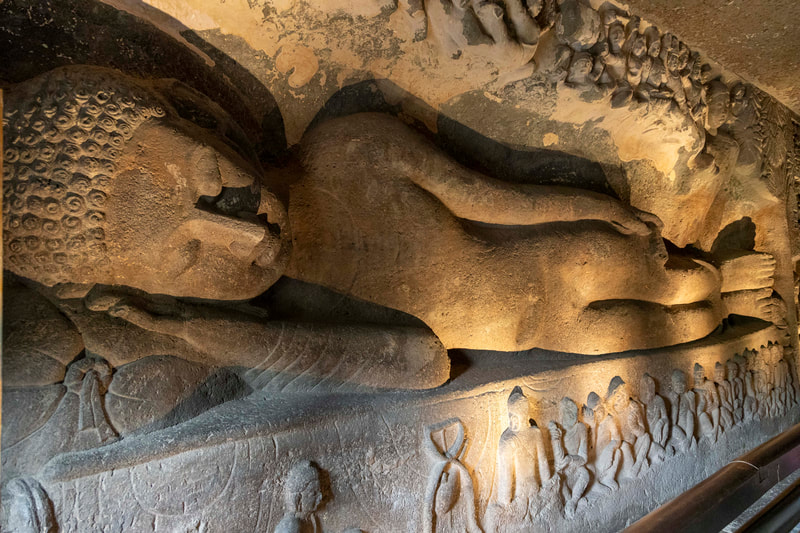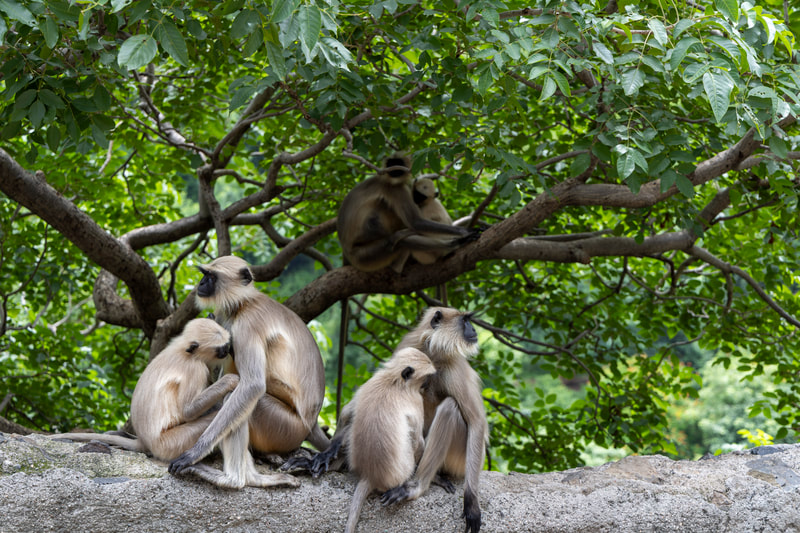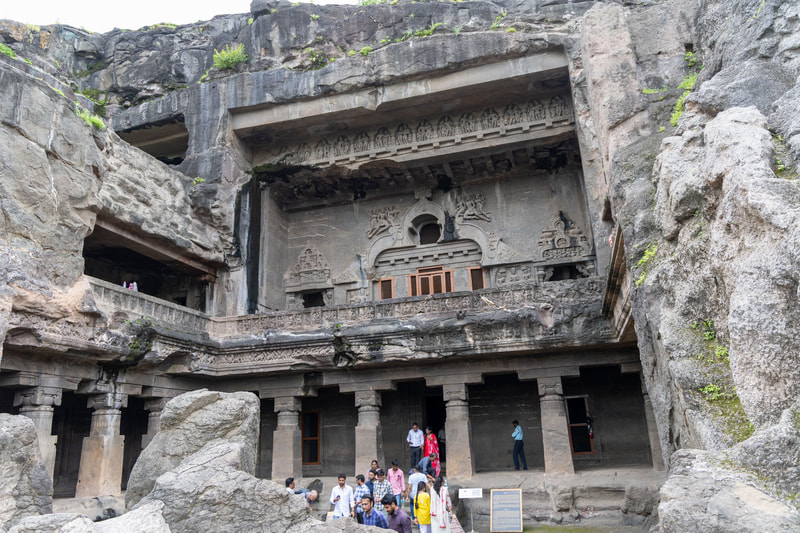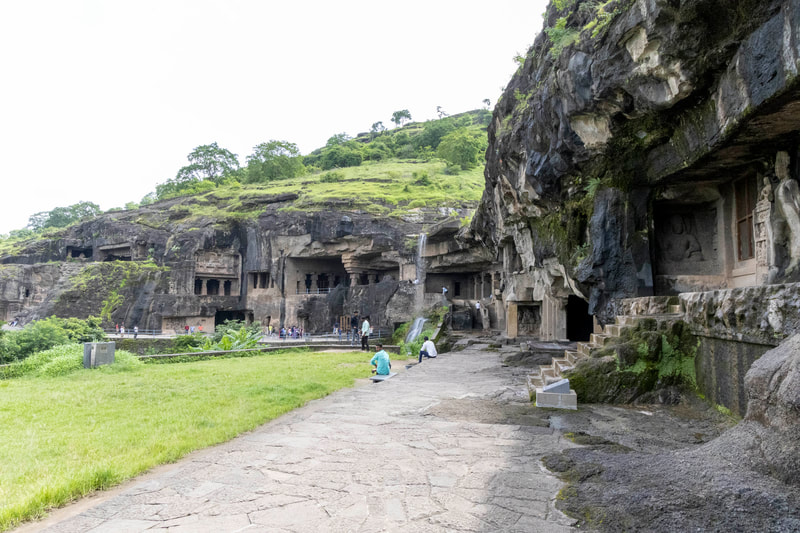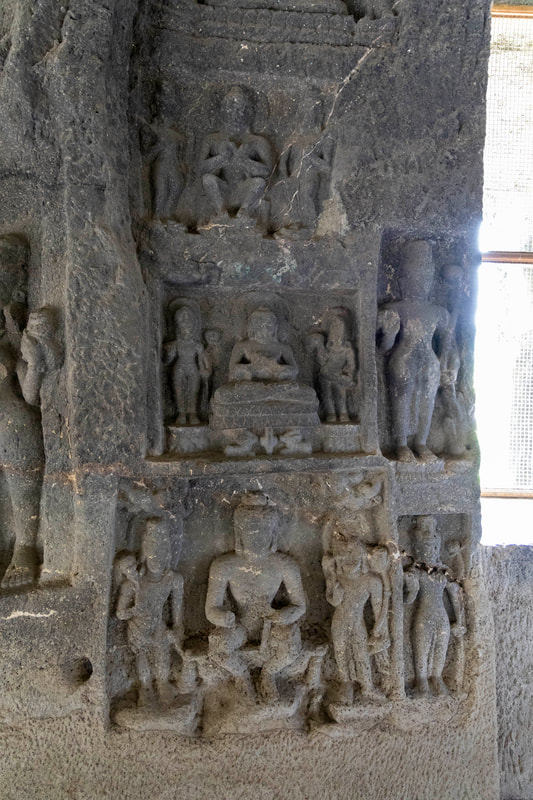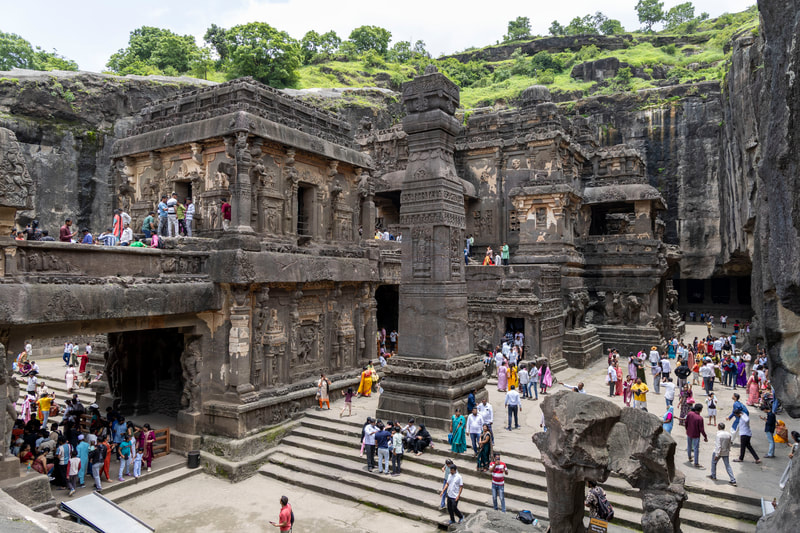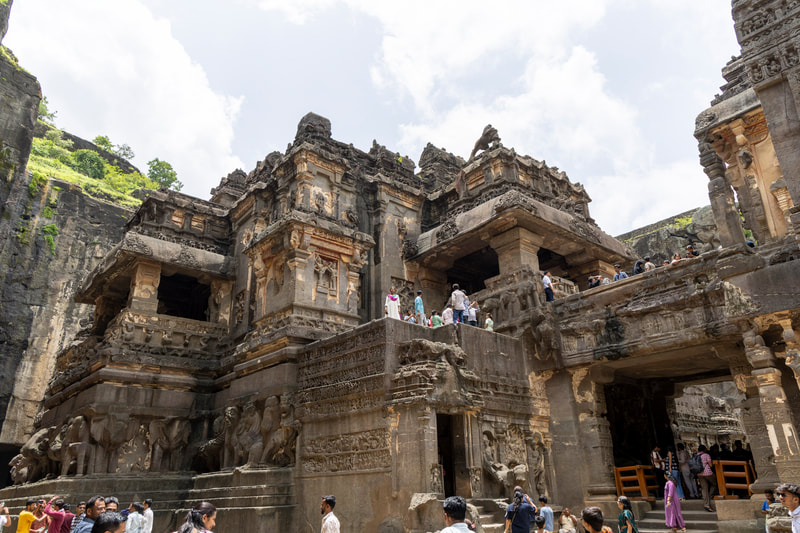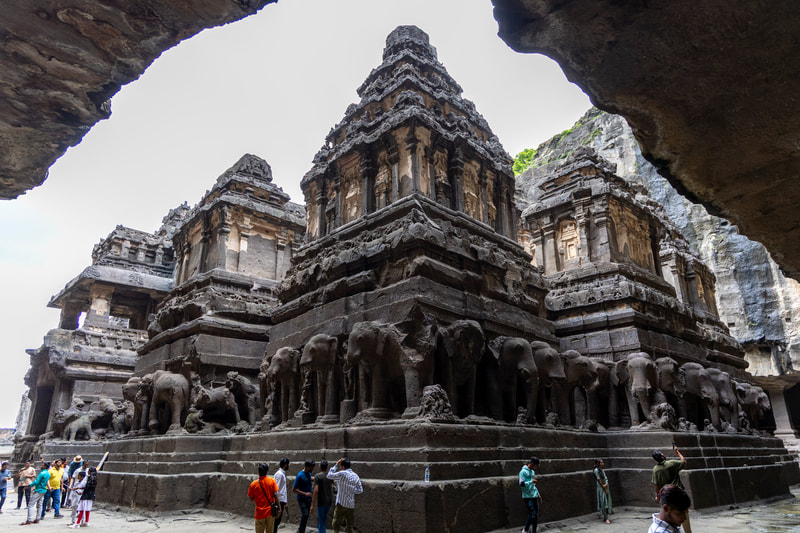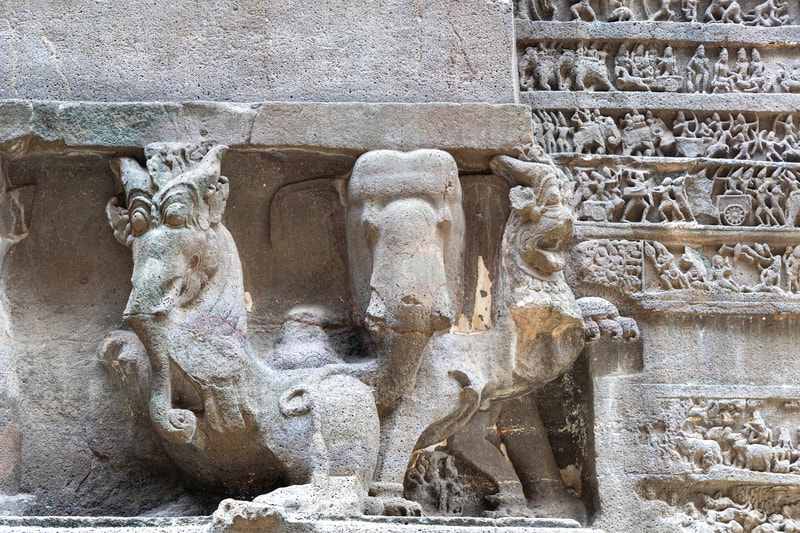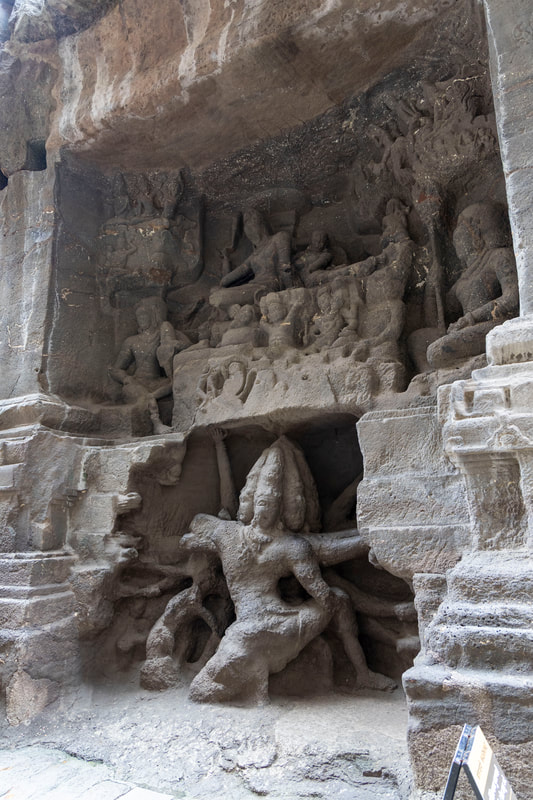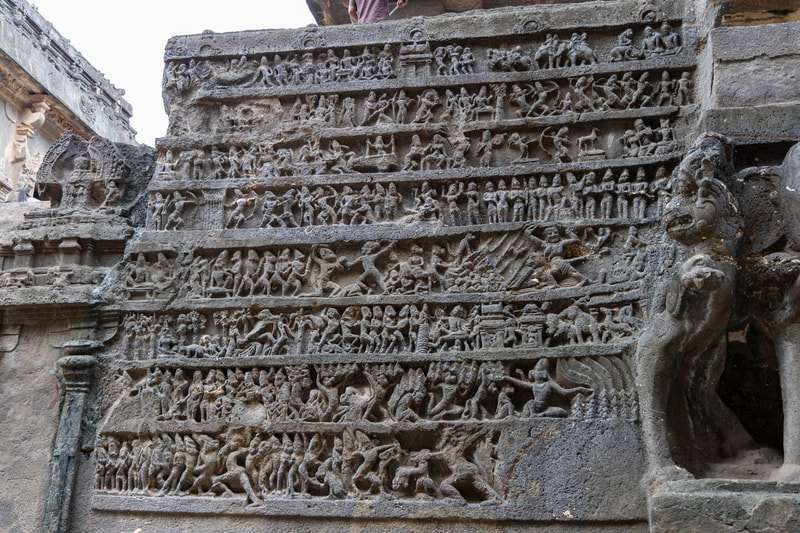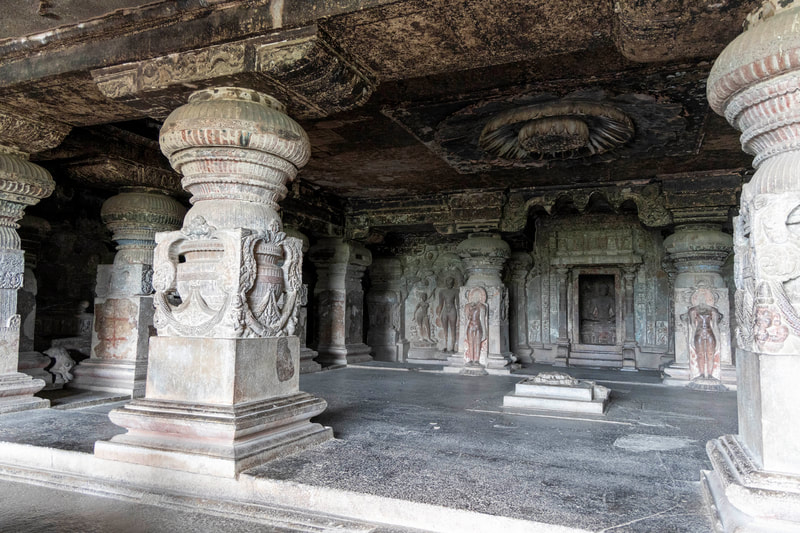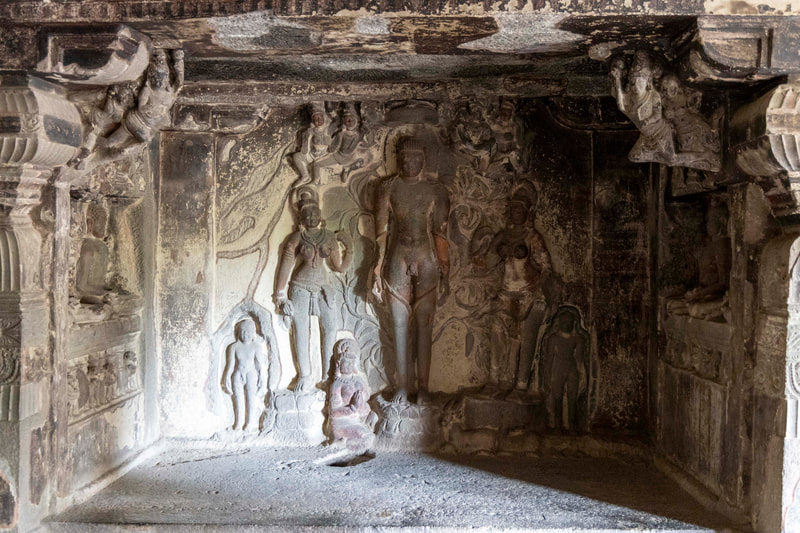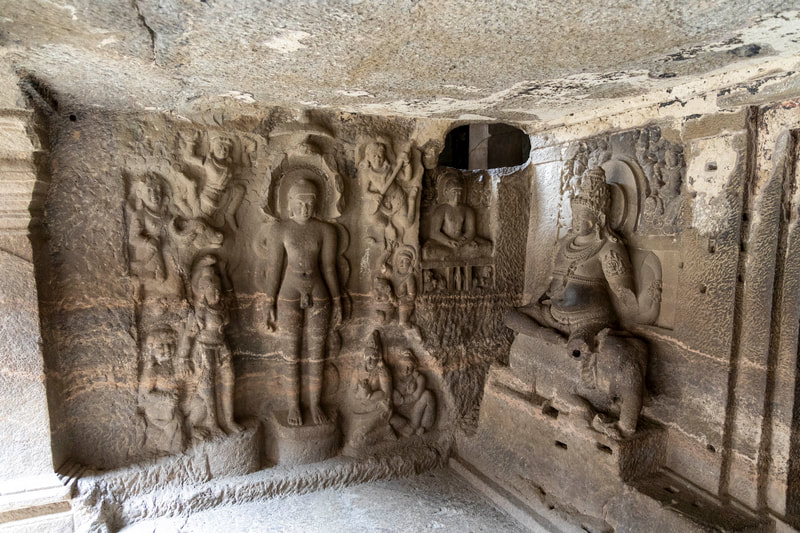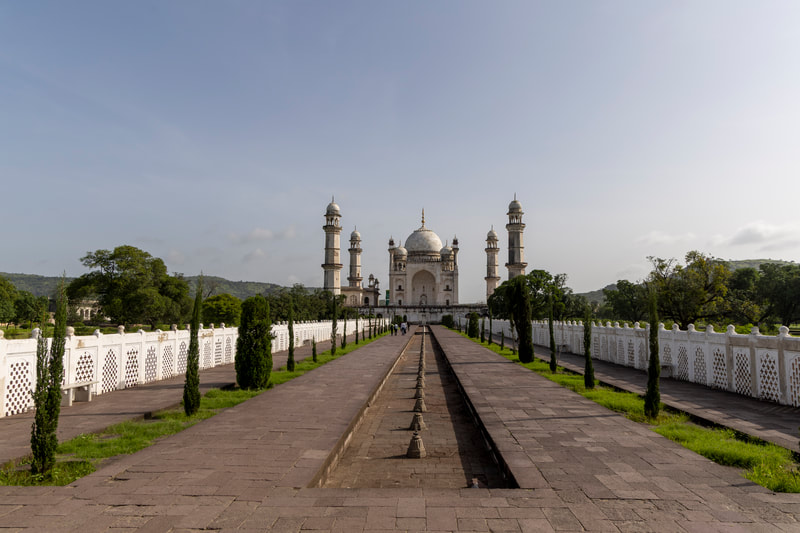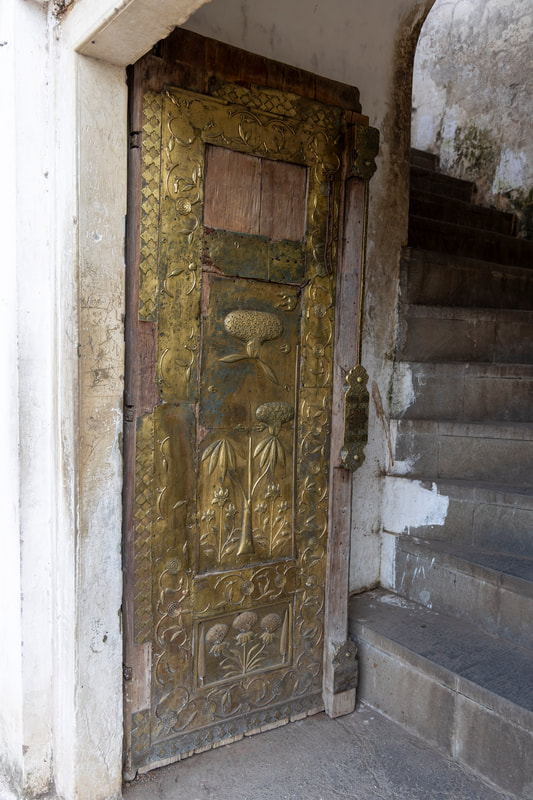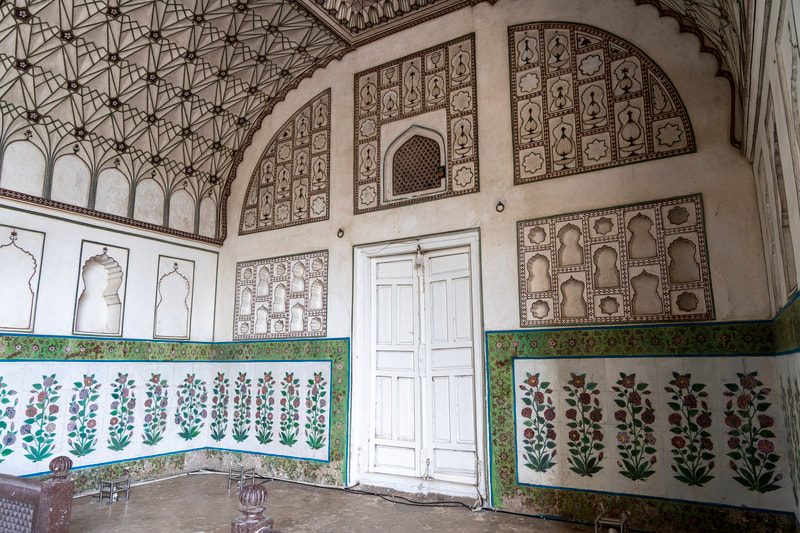|
Am letzten Wochenende sind wir nach Aurangabad gereist. Von dort aus haben wir die Ajanta- und Ellora-Höhlen besucht, beide gehören zum UNESCO Welterbe. Die Ajanta-Höhlen wurden währen zwei Perioden gebaut, bzw. ausgehöhlt: von 2. bis 1. Jh. v. u. Z. (vor unserer Zeitrechnung) und vom 5. bis 6. Jh. n. u. Z. (Ich benütze diese Abkürzungen, weil "v. u. Z." eine religionsneutrale Alternative zu "v. Chr." ist, und wir hier in Indien immer diese Bezeichnung - auf englisch - lesen und hören. Das macht ja auch Sinn in einem zum grössten Teil nicht-christlichen Land.) Es handelt sich um 30 Höhlen, die entweder als buddhistische Kloster oder als Gebetshallen benützt wurden. Sie wurden mit Meissel und Hammer aus dem (vulkanischen) Gestein gehauen, danach mit Gips überzogen und reich bemalt. Im 6. Jh wurden die Höhlen aufgegeben und ihre Existenz wurde über viele Jahrhunderte hinweg vergessen. In 1819 entdeckte ein britischer Offizier sie zufällig bei der Jagd (er verfolgte einen Tiger). Weil sie so lange nicht benützt wurden, sind sie in einem erstaunlich guten Zustand und man sieht immer noch viele Farben in den Malereien. In Ellora befinden sich 34 Höhlen, vom 6. bis 12. Jh. n. u. Z. erstellt. Hier gibt es buddhistische, hinduistische und jainistische Höhlen. Dieses Nebeneinander zeigt die religiöse Toleranz, die damals herrschte. Herausragend ist der hindustisch Kailasa-Tempel, dem Gott Shiva gewidmet. Er ist der grösste Temple, der aus einem Stein gehauen wurde, von oben nach unten, in 160 Jahren fertiggestellt (wenn ich daran denke, wie lange es gedauert hat, bis z. Bsp. der Kölner Dom beendet wurde, ist das eine grosse Leistung). Beide Höhlenkomplexe sind extrem beeindruckend: die Architektur, die Arbeit am Stein, die Malereien sind sehr eindrücklich. Auch die Lage in der Natur ist wunderschön und es war ein guter Moment, sie in der Monsun-Zeit zu besuchen; alles ist üppig grün und es hat nicht allzu viele Touristen - mit der Ausnahme vom Kailasa-Tempel, aber wir waren am Sonntag dort, als auch viele Einheimische den Tempel besucht haben. Er gilt immer noch als heilig für die Fruchtbarkeit (er hat einen Shiva-Lingam, also einen Penis, als Heiligtum 😉). Wir haben auch ein Mausoleum besucht, das Bibi Ka Maqbara. Das ist auch sehr schön. Pictures of Ajanta: Last weekend we travelled to Aurangabad. From there we visited the Ajanta and Ellora caves, both of which are UNESCO World Heritage Sites. The Ajanta Caves were built, or rather excavated, during two periods: from the 2nd to 1st century BCE (before the common era) and from the 5th to 6th century CE. (I use these abbreviations because "BCE" is a religion-neutral alternative to "BC" and here in India we always see this term. That makes sense in a largely non-Christian country). There are 30 caves, which were either used as Buddhist monasteries or as prayer halls. They were hewn out of the (volcanic) rock with a chisel and hammer, then covered with plaster and richly painted. The caves were abandoned in the 6th century and their existence was forgotten for many centuries. In 1819, a British officer discovered them by chance while hunting (he was chasing a tiger). Because they have not been used for so long, they are in surprisingly good condition and you can still see many colours in the paintings. There are 34 caves in Ellora, built between the 6th and 12th centuries CE. There are Buddhist, Hindu and Jain caves here. This coexistence shows the religious tolerance that prevailed at the time. The Hindu Kailasa temple, dedicated to the god Shiva, is outstanding. It is the largest temple to be carved out of one stone, from top to bottom, completed in 160 years (when I think of how long it took to finish the Cathedral in Cologne, for example, that is a great achievement). Both cave complexes are extremely impressive: the architecture, the work on the stone, the paintings are very impressive. The location in the countryside is also beautiful and it was a good time to visit them in the monsoon season; everything is lush green and there are not too many tourists - with the exception of the Kailasa temple, but we were there on Sunday when many locals also visited the temple. It is still considered sacred for fertility (it has a Shiva lingam, or penis, as a shrine 😉). We also visited a mausoleum, the Bibi Ka Maqbara. This is also very beautiful. Pictures of Ellora Buddhistic caves Kailasa temple Jain caves Le week-end dernier, nous nous sommes rendus à Aurangabad. De là, nous avons visité les grottes d'Ajanta et d'Ellora, toutes deux inscrites au patrimoine mondial de l'UNESCO.
Les grottes d'Ajanta ont été construites ou creusées pendant deux périodes : du 2e au 1er siècle avant notre ère et du 5e au 6e siècle après notre ère. Il s'agit de 30 grottes qui ont été utilisées soit comme monastères bouddhistes, soit comme salles de prière. Elles ont été taillées dans la roche (volcanique) au burin et au marteau, puis recouvertes de plâtre et richement peintes. Au 6e siècle, les grottes ont été abandonnées et leur existence a été oubliée pendant de nombreux siècles. En 1819, un officier britannique les a découvertes par hasard lors d'une chasse (il poursuivait un tigre). Comme elles n'ont pas été utilisées pendant si longtemps, elles sont dans un état étonnamment bon et on peut encore voir de nombreuses couleurs dans les peintures. Ellora abrite 34 grottes, construites entre le 6e et le 12e siècle de notre ère. On y trouve des grottes bouddhistes, hindouistes et jaïnistes. Cette coexistence montre la tolérance religieuse qui régnait à l'époque. Le temple hindou Kailasa, dédié au dieu Shiva, est remarquable. C'est le plus grand temple taillé dans une seule pierre, de haut en bas, achevé en 160 ans (quand je pense au temps qu'il a fallu pour achever la cathédrale de Cologne, par exemple, c'est une grande performance). Les deux complexes de grottes sont extrêmement impressionnants : l'architecture, le travail sur la pierre, les peintures sont très impressionnants. Leur situation dans la nature est également magnifique et c'était le bon moment pour les visiter en période de mousson ; tout est d'un vert luxuriant et il n'y a pas trop de touristes - à l'exception du temple de Kailasa, mais nous y étions dimanche, lorsque de nombreux locaux ont également visité le temple. Il est encore considéré comme sacré pour la fertilité (il a un lingam de Shiva, donc un pénis, comme sanctuaire 😉). Nous avons également visité un mausolée, le Bibi Ka Maqbara. C'est aussi très beau.
0 Comments
Leave a Reply. |
About usWe are a couple in the mid-fifties and are going to live for two years in Hyderabad, India. Time in Hyderabad
Archives
November 2025
Categories |
